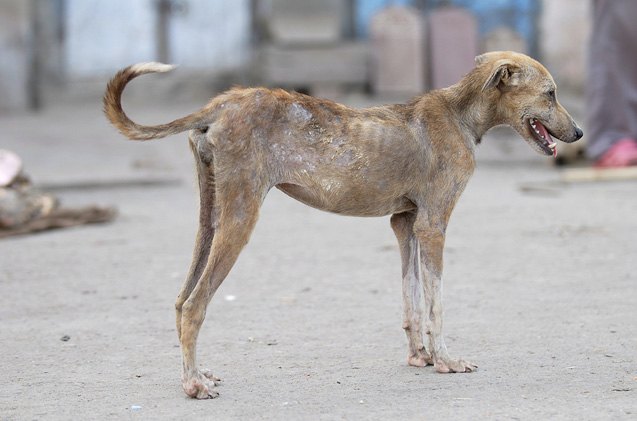What Is Mange In Dogs?

You’ve probably heard the term “mangy mutt” thrown around, but do you really know what it means? The term mange refers to a skin disease that is caused by external parasites residing in your dog’s skin and hair follicles. This condition can result in irritation, hair loss, and the development of lesions on the skin. If not treated, mange in dogs can lead to severe infections. To protect your dog from mange, take the time to learn about the causes and symptoms of this condition as well as its treatment options and methods for prevention.
Causes and Symptoms
Mange is caused by tiny mites that live on or under the surface of a dog’s skin or within the hair follicles. There are two different types of mange, each caused by a specific type of mite. Demodectic mange is caused by a parasite called Demodex canis – this type of mite lives inside the hair follicle. Sarcoptic mange is caused by Sarcoptes scabei mites – these mites live just under the surface of the skin. Demodectic mange mites are the most common type and they can live on a dog’s body without ever causing a problem. If the dog develops a compromised immune system, however, the mites may begin to reproduce and cause a problem. Demodectic mange is most commonly seen in puppies under 18 months of age. In fact, demodectic mange mites can be transferred from mother to puppies within days of their birth.
Related: What Are The Benefits Of Coconut Oil For Dogs?
Sarcoptic mange mites can also be easily transferred from one dog to another and the mites typically spend their entire life living on a dog. The female Sarcoptes scabei mite will actually burrow into the dog’s skin where she will deposit eggs that hatch between three and eight days later. The presence of both sarcoptic and demodectic mange mites on a dog typically causes symptoms like hair loss and itching. As the infestation spreads, the dog may develop small red pustules on the skin which can lead to further irritation. If the problem is not addressed, secondary bacterial infections may occur.
Treatment Options
The symptoms of mange may be either localized or generalized. Localized cases of mange in dogs occur when the mites infect only one or two small areas on the body – generalized cases involve larger areas or the dog’s whole body. Cases of localized mange often resolve themselves without any treatment but generalized mange is more likely to lead to secondary infections which will require treatment. The first step in treatment is to identify the type of mite responsible. For sarcoptic mange, isolation from other animals is recommended and certain anti-parasitic medications may be prescribed. If your dog has demodectic mange which results in a secondary infection, your vet may also recommended bathing with medicated shampoo or additional medications to treat the infection.
Related: The Shocking Truth About Dogs and Garlic
Tips for Prevention
The best way to prevent mange is to ensure that your dog doesn’t come into contact with animals already carrying the parasites. Young dogs typically recover easily from mange, but older dogs may take longer to heal. It is possible that demodectic mange can be transferred congenitally, so dogs with this condition should not be bred.
If you suspect that your dog has mange, seek veterinary care as soon as possible. Your vet will be able to run certain tests to determine whether your dog has mange and, if so, which type, in order to recommend a course of treatment.

Kate Barrington is the loving owner of two cats (Bagel and Munchkin) and a noisy herd of guinea pigs. Having grown up with golden retrievers, Kate has a great deal of experience with dogs but labels herself a lover of all pets. Having received a Bachelor's degree in English, Kate has combined her love for pets and her passion for writing to create her own freelance writing business, specializing in the pet niche.
More by Kate Barrington























